StreamLine Allsky series
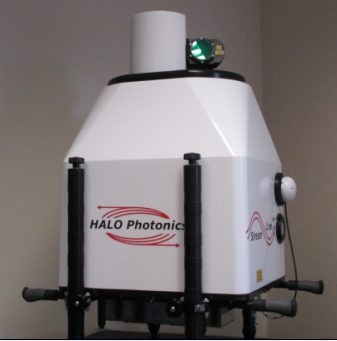
The StreamLine series is a range of compact Doppler LiDAR systems offering high resolution, high output power and so forth high range with an all sky scanner system. It offers the benefit of low power consumption, light weight and portable operation coupled with autonomous operation.
The StreamLine series advantageously complement the Wind Pro for met masts and vertical profiling LiDAR and provide among the most flexible and accurate wind measurements tools for wind mapping, wake analysis for onshore and offshore projects.
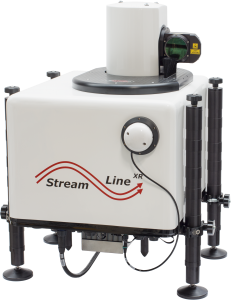
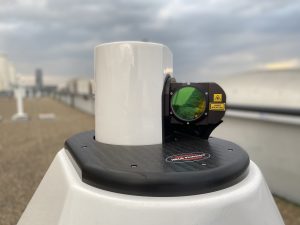
The StreamLine series today consists of a family of 3 products all having similar and well proven core components but with different ranges:
- StreamLine XR with range up to 10 km
- StreamLine XR + with range up to 12 km
- StreamLine LR with range up to 15 km
Main features
- Field deployable
- Turn key operation
- All-sky scanner
- Scan queue synchronised to GPS time
- Multiple LiDAR syncing via master controller over network
- Step-stare and continuous scanning
- Full control of scanner parameters
- Overlapped range gates – 3 m range resolution
- Raw data storage
- Eye safe (Class 1M)
- Data logged in ASCII
- Real-time data acquisition to 5, 10, 15 km depending on version
- Arbitrary scan patterns
- UPS power cut protection
- Mature, reliable technology
- Extended temperature option
- Flexible software
- Remote monitoring/control
- UDP data broadcasting
- Email alerts

12 km sampling range with up to 8000 individual gates per ray.

First 750 m (500 gates) of a 7 km data set showing the line of sight Doppler (lower colour plot) and associated spectral width (top colour plot).
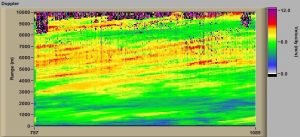
Range/time/Doppler plot for a fixed LOS 40 m gates, 1-second average per ray, 6-minute record. The raw data were saved and re-processed as shown below.
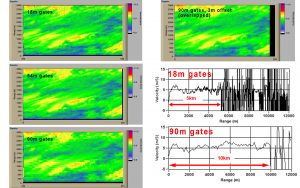
Identical data are re-processed with 18 m, 54 m and 90 m range gate lengths. It can be seen that the 90 m overlapped output shows a comparable level of detail to the 18 m un-overlapped output. The Doppler v. range comparisons (lower-right) show that the range to which good Doppler can be processed is significantly extended with the longer gate setting.
-
Airports
Wind profiles
Vortex detection and tracking -
University research
PBL mapping
Eddy dissipation rate
Cloud research -
Climate and environmental monitoring
City pollution mapping
Air quality assessment
Pollution dispersion
Forest fire detection and tracking -
Meteorology
Wind profiling
Visibility
Boundary layer mixing height
Scanning ceilometer -
Wind energy
Site prospection
Calibration
Continuous wind monitoring
Power performance verification
Wind resource assessment
Site suitability
Technical specifications
- All-sky scanner with wipe facility. Azimuth slip-ring giving full hemispherical coverage with 0.01° resolution in both axes
- Active heat exchanger. Temperature stabilized environmental enclosure. External temperature range -20 °C to +45 °C (active cooling option)
- System provides range gated line-of-sight velocity versus time
- System provides range gated SNR and backscatter
- Data collection to 12 km with near 100 % duty cycle (set up dependent)
- Raw averaged data can be logged (un-range gated), and re-processed using different gate lengths and averages
- Gate overlapped mode
- Eye safe, Class 1M
- Transceiver aperture: 75 mm
- Minimum range: Typically < 60 m
- Enclosure dimensions:
- Streamline and Streamline XR : 63 x 53 x 40 cm
- Streamline XR+ : 63 x 53 x 65 cm
- Weight: 85 kg
- Power requirement: 24V DC, 150 W (Extra 340 W [maximum] for extended cooling option)
- Pulse rate : 10 kHz
- Temporal resolution selectable in from 0.1 – 30 seconds
- Velocity precision < 20 cm s-1 for SNR > -17 dB
- Bandwidth: ±19 m/s or (optional) ± 38 m/s
- Real-time display of data and system health checks
- Software selectable range gate size, number of shots to average and number of gates to process per ray
- Both step-stare and continuous scanning modes are possible. A daily schedule, synchronized to GPS time can be defined where the scan mode and scan parameters are set for each element of the scan sequence
- Windows 10, solid-state hard drive
- UDP data broadcasting
- Email alerts (low drive space, power cut, over temperature etc.)
- Integrated GPS
- Standard 1 year warranty (terms & conditions on request)
LiDAR synchronising over a network
The all-sky scanning StreamLine and StreamLine XR systems ship with free software that will allow them to be synchronised with other units. This is very useful for operating several LiDARs in dual or triple Doppler mode.
A controller PC connects to the same network as the LiDARs, and co-ordinates data acquisition timing and scanner movement. The controller will log all of the commands and responses from each LiDAR, and will ensure that all timings are good to within less than 10 mS. It is not important for each individual LiDAR to be set to exactly the same system time (because time can quickly drift on a PC), and so all acquisition and scanner movement is performed with respect to the controller’s time. More details about this mode of operation can be sent on request.
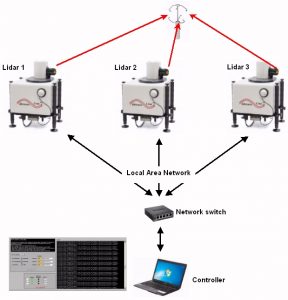
Gate overlapping
High resolution data acquisition is possible with gate overlapping mode and the ability to select relatively short range gate lengths. With gate overlapping, successive groups of sample points are processed by advancing one point (3 m at 50 MHz sampling) for each new range gate rather than a whole range gate length.

In the example data shown above, gate overlapping is enabled for the first part of the capture, and then disabled after the break. The non-overlapped data appears to be quite pixelated compared to the overlapped part. It is possible to improve the appearance of long range-gate data by enabling gate overlapping. The LiDAR will process data more efficiently if longer gates are processed, but the overall resolution will appear coarse – and this is where overlapping can help.
